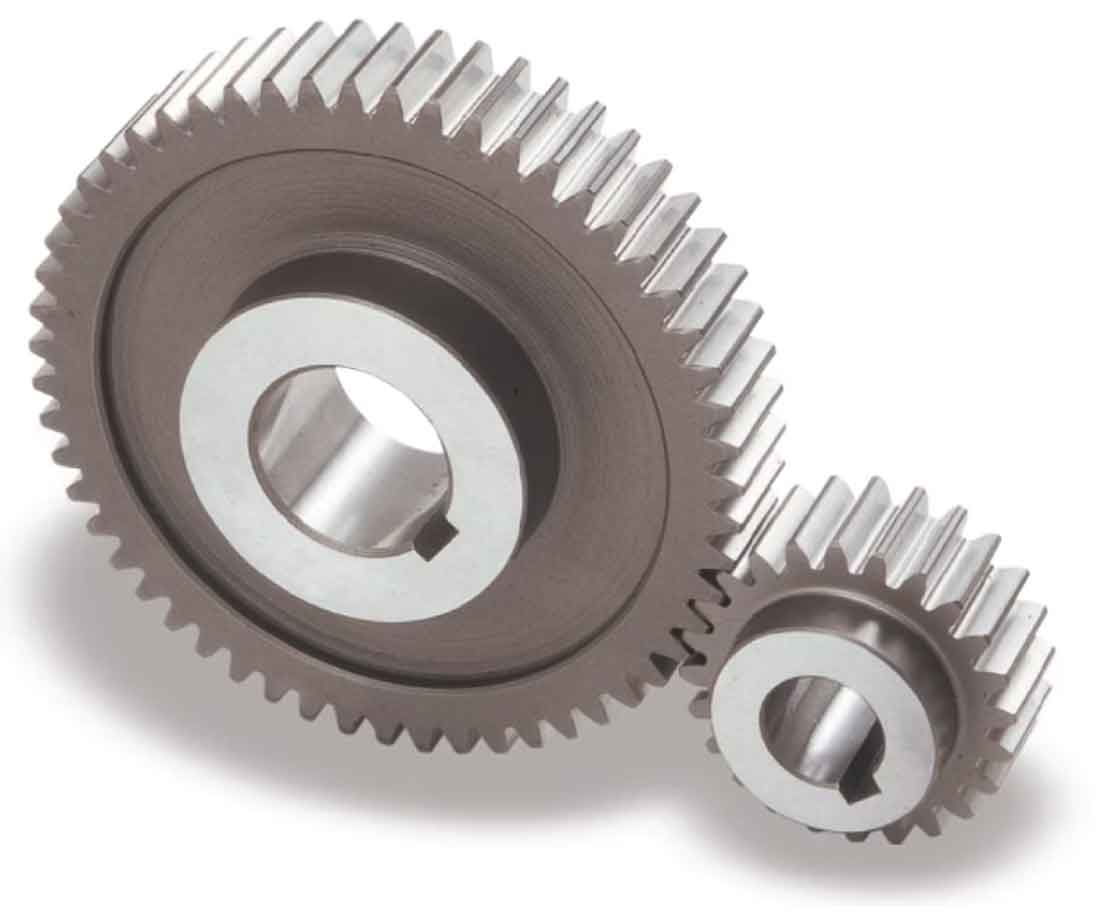
Spur gears are one of the most fundamental types of gears used in mechanical power transmission. They are simple, cost-effective, and widely used in various applications. Here’s a comprehensive guide to spur gears and their role in mechanical power transmission:
1. What are Spur Gears?
Spur gears are cylindrical gears with straight teeth that are parallel to the gear’s axis. They are mounted on parallel shafts and mesh together to transmit rotational power and motion between the shafts. Spur gears can have various sizes, diameters, and tooth numbers, allowing for a wide range of gear ratios.
2. Gear Terminology:
- Pitch Circle: The theoretical circle on which the teeth of the gear are uniformly spaced.
- Pitch Diameter: The diameter of the pitch circle.
- Gear Ratio: The ratio of the number of teeth on the driven gear to the number of teeth on the driving gear, which determines the speed and torque relationship between the gears.
- Center Distance: The distance between the centers of the two meshing gears.
- Backlash: The small gap between the meshing teeth, which allows for proper gear engagement without jamming.
3. Advantages of Spur Gears:
- Simplicity: Spur gears have a straightforward design, making them easy to manufacture, install, and maintain.
- Cost-Effectiveness: Due to their simplicity, spur gears are generally more cost-effective to produce compared to other gear types.
- High Efficiency: Spur gears have high efficiency in transmitting power between parallel shafts when properly lubricated and aligned.
4. Applications of Spur Gears:
- Spur gears are commonly used in various machinery and mechanical systems, including:
- Power transmission in industrial machinery such as conveyor systems, mills, and pumps.
- Automotive applications, including gearboxes and steering systems.
- Clocks and watches for timekeeping.
- Printing and paper handling equipment.
5. Gear Meshing and Efficiency:
Spur gears mesh with each other when they rotate on parallel shafts. The teeth of the gears engage fully, providing a smooth and continuous transfer of power. However, spur gears can experience higher friction and wear compared to other gear types, such as helical gears.
6. Noise and Vibration:
One limitation of spur gears is that they can produce higher levels of noise and vibration due to the instantaneous engagement of teeth during gear meshing. The abrupt contact can lead to impact and vibration, making them less suitable for noise-sensitive applications.
7. Gearbox Design:
Spur gears are commonly used in gearboxes to achieve specific gear ratios required for different applications. The design of the gearbox is essential to ensure proper alignment, lubrication, and noise reduction.
8. Lubrication:
Proper lubrication is crucial for reducing friction and wear in spur gears. Adequate lubrication also helps dissipate heat generated during gear operation, increasing gear life and efficiency.
In conclusion, spur gears are a fundamental component of mechanical power transmission, offering simplicity, cost-effectiveness, and high efficiency. While they are widely used in various applications, their noise and vibration characteristics need to be considered, especially in noise-sensitive systems. Proper maintenance and lubrication are essential to ensuring smooth and reliable operation of spur gears in mechanical systems.
